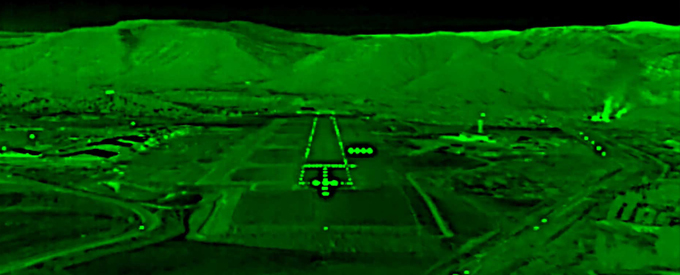2021-09-01
Collins to Equip Airbus with Enhanced Vision Sensor
Collins Aerospace’s next-generation Enhanced Vision Sensor was recently selected to be integrated into Airbus’ Enhanced Flight Vision System (EFVS). The EFVS will become a selectable option on Airbus commercial aircraft, expanding approach capability and increasing flight situational awareness during reduced visibility conditions. The EFVS option, with the Collins EVS sensor, will be offered first on the A320 aircraft, with plans to offer the solution on other platforms in the future.
The EFVS will use input from the Collins Aerospace sensor, mounted on the nose of the aircraft, to create an augmented reality view of the outside world. The sensor uses multiple infrared and visible light cameras to “see through” poor visibility conditions better than the human eye.
When the pilots view this camera video on head-up displays, it allows them to better identify the runway environment in all weather conditions — helping pilots overcome flight disruptions often created by fog or precipitation. In addition, because the technology enables pilots to reduce delays on the runway and in the air, it actively reduces the amount of carbon emissions created by the aircraft.
Additionally, EFVS will ease instrument to visual transition and provide enhanced situational awareness, particularly for night Visual Meteorological Conditions (VMC) conditions, and/or terrain, as well as lateral alignment on the runway, traffic, and runway surface identification.
With the advanced avionics technology of the EFVS on board, pilots will have increased flexibility to land in more places, more often, and in different weather conditions, further enhancing the utility of their aircraft.
The key benefits of the sensor are enhanced crew awareness of the aircraft’s position relative to the runway and surrounding terrain, improved monitoring, and control of the aircraft energy state and flight path through intuitive display of attitude, path vector and acceleration.
It also offers improved stability and precision on all landing approaches, including “black hole” approaches to airports not equipped with precision landing aids.
Moreover, the sensor offers a full field-of-view infrared video overlaid on head-up display, which allows pilots to see the runway environment before it’s visible to the unequipped eye.
It also has an inertial flight path indication that provides instantaneous symbology of where the aircraft is headed and has a runway remaining display during landing rollout that contributes to smoother deceleration. Also, crosswind and wind shear indications enable more accurate flight path control while keeping pilots’ attention focused outside the windscreen.
The next-generation EVS sensor will also be available for retrofit on existing in-service Airbus aircraft.


No Comments